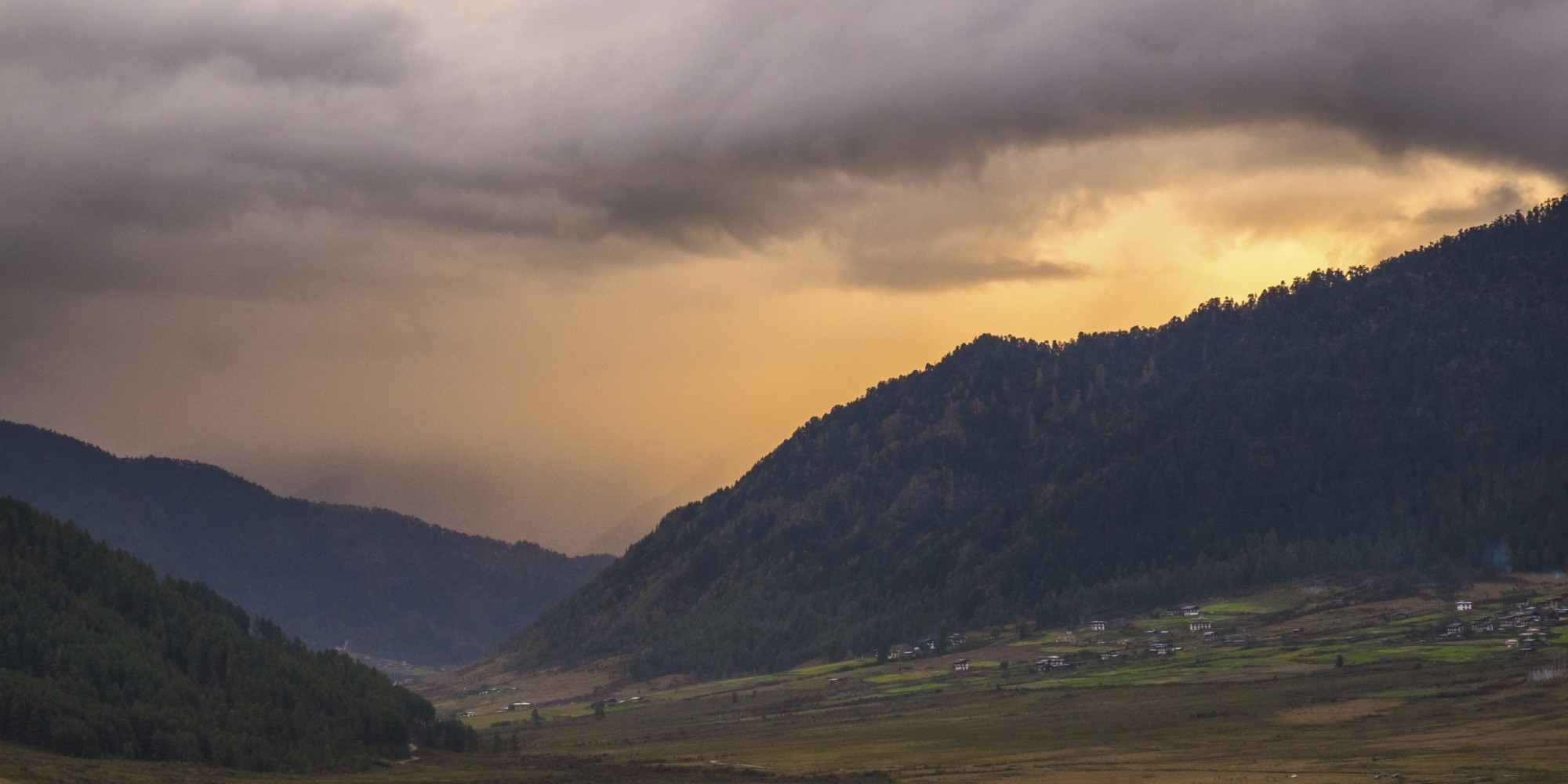
Location
This tiny mountainous Himalayan country might be small in size, but certainly makes up for it with a diverse list of choices of landscape and natural scenery. Landlocked Bhutan is heavily forested, bordering Tibet for 470km to the north and bordering India for 605km to its south. While ten percent of the country remains covered by year-round snow and glaciers, only six percent is currently used for human habitation. These figures are testament that Bhutan’s landscape remains unspoilt and a delight to take in.
It has one of the world’s most rugged mountain terrains, with elevations ranging from 160 meters to more than 7,500 meters above sea level, in many cases separated by less than hundred kilometres from one another. Elevation mostly increases from south to north.
Bhutan consists of three major land regions.
The northern region of Bhutan comprises of glaciated mountain peaks with a sub-zero climate at the highest elevations. Snow-fed rivers water the valleys below which provide pasturage for cattle tended by a sparse population of herdsmen.
Flora and fauna
Inner Bhutan encompass fertile valleys that have moderate rainfall with a more temperate climate. This region is well populated, as well as cultivated. Duars, is a large plain which lies at the foothills of the southern part of the middle Himalayan valleys, while the northern part of the Duars is home to deer, lion, leopards and the rare golden monkey. Here a much more tropical vegetation can be found including many species of beautiful wild orchids.
In the south, the foothills of the Himalayas are covered with dense native forest which descend into the subtropical Duars Plain. The Bhutan Duars consists of two parts. The northern Duars, which borders the Himalayan foothills are rugged with sloping terrain and dry permeable soil with dense vegetation and rich wildlife. The southern Duars consists of less fertile soil with savanna grass, thick jungle, and natural freshwater springs. Duars provides the greatest amount of fertile flatlands in Bhutan. Rice and other crops are grown on the plains and mountainsides of this region up to 1,200 meters.
The kingdom of Bhutan is one of the world’s top ten biodiversity hot spots. Due to its geological location, the country experiences an array of climates. Subsequently a wide variety of plants, flowers and trees are to be found, from dense forestation, grazing lands, succulent green valleys, which surround wild flowing rivers and crystal clear lakes. Bhutan’s rich flora consist of more than five thousand species of plants like the beautiful rhododendron species, magnolias, over 600 orchid species, medicinal plants, beard moss and the infamous blue poppy, which is Bhutan’s national flower.
Bhutan is inhabited by more than 160 species of mammals, many native to Bhutan. A land of tigers, elephants, golden langurs, butterflies, water buffalos, bluey sheep, rhesus monkeys and yaks which are also pets of many Bhutanese people. The high Himalayas are where the snow leopard can be found. Birdwatchers also flock to Bhutan with over 620 bird species. The Takin is Bhutan’s national animal, which remain fondly associated with folklore and religious history.
More than 25% of the country consists of national parks, nature reserves, conservation areas and wildlife sanctuaries. The Royal Manas National Park, Jigme Singye Wangchuk National Park, Thrumshing La National Park, Khaling Wildlife Sanctuary, Jigme Dorji National Park, Phipsoo Wildlife Sanctuary, Bumdeling Wildlife Sanctuary, Kulong Chhu Wildlife Sanctuary, Toorsa Nature Reserve and Sakteng Wildlife Sanctuary are just some of the more visited national parks in Bhutan.

